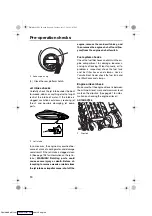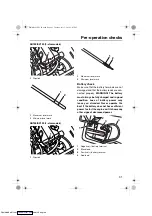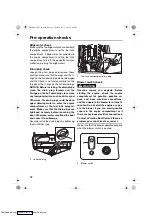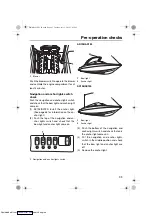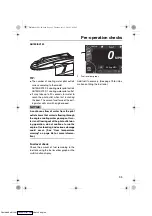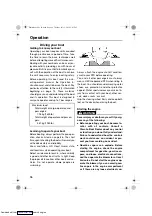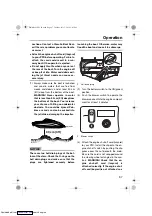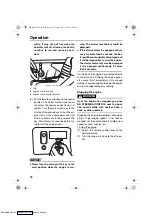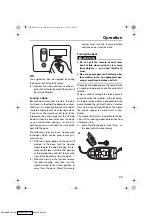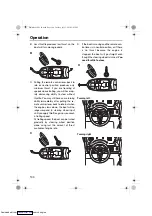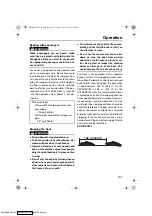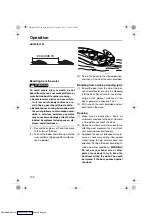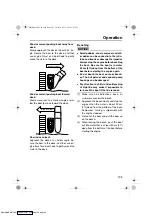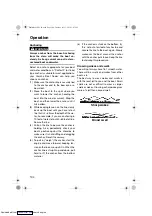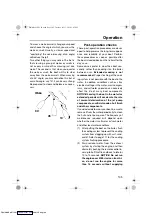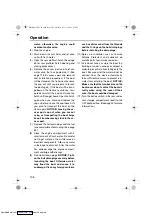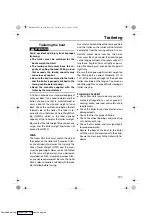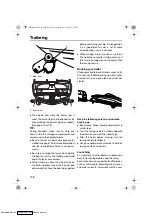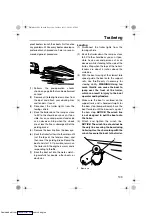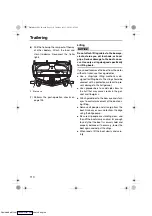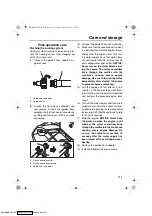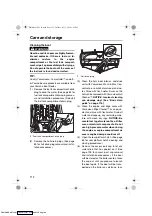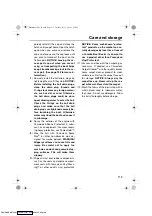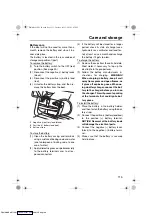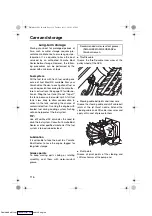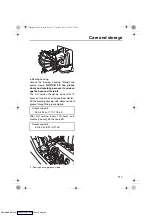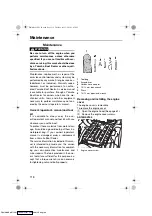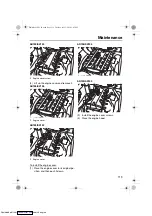
Operation
104
Anchoring
WARNING
Always anchor from the bow. Anchoring
from the stern will make the boat un-
steady. A strong current can pull a stern-
anchored boat underwater.
Select an anchor appropriate for your boat
and water conditions. A “Danforth” (or fluke)
type anchor is suitable for most applications;
your Yamaha Boat Dealer can help you
choose an anchor.
(1) Make sure the anchor line is securely tied
to the anchor and to the bow eye or a
bow cleat.
(2) Move the boat to the spot where you
want to lower the anchor, heading the
boat into the wind or current. Stop the
boat, and then lower the anchor until it
hits bottom.
(3) While keeping tension on the line, slowly
back up the boat until you have let out
line that is 4–6 times the depth of the wa-
ter. For example, if you are anchoring in
10 feet of water, let out 40–60 feet of line.
Secure the line.
(4) Pull on the line to be sure the anchor is
holding. Also, periodically check your
boat’s position against the shoreline to
make sure it is not drifting and dragging
the anchor. Reset if necessary.
(5) To pull in (“weigh”) the anchor, start the
engine and move forward, keeping ten-
sion on the line as you pull it in. When the
anchor line is straight up and down, pull
hard to lift the anchor from the bottom
material.
(6) If the anchor is stuck on the bottom, try
this: Let out a few feet of anchor line and
secure the line to the boat, again. Slowly
maneuver the boat around the anchor
until the anchor pulls loose. Keep the line
taut during this procedure.
Crossing wakes and swells
You will not always have flat, smooth water.
There will be swells and wakes from other
boats, etc.
The best way to cross wakes and swells is
with the least jolt to you and the boat. Small
swells are not as difficult to cross as larger
swells or wakes. Crossing a sharp wake gives
more of a jolt than a broad swell.
Sharp wakes
Broad swell
SportsBoat_F4V10.book Page 104 Tuesday, July 3, 2018 1:03 PM
Downloaded from

